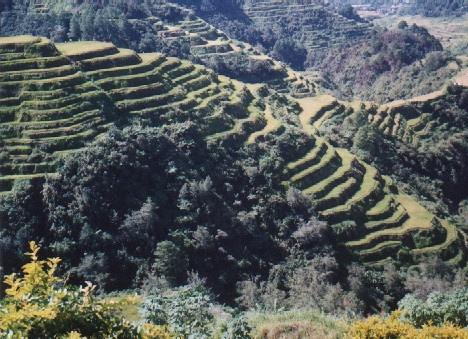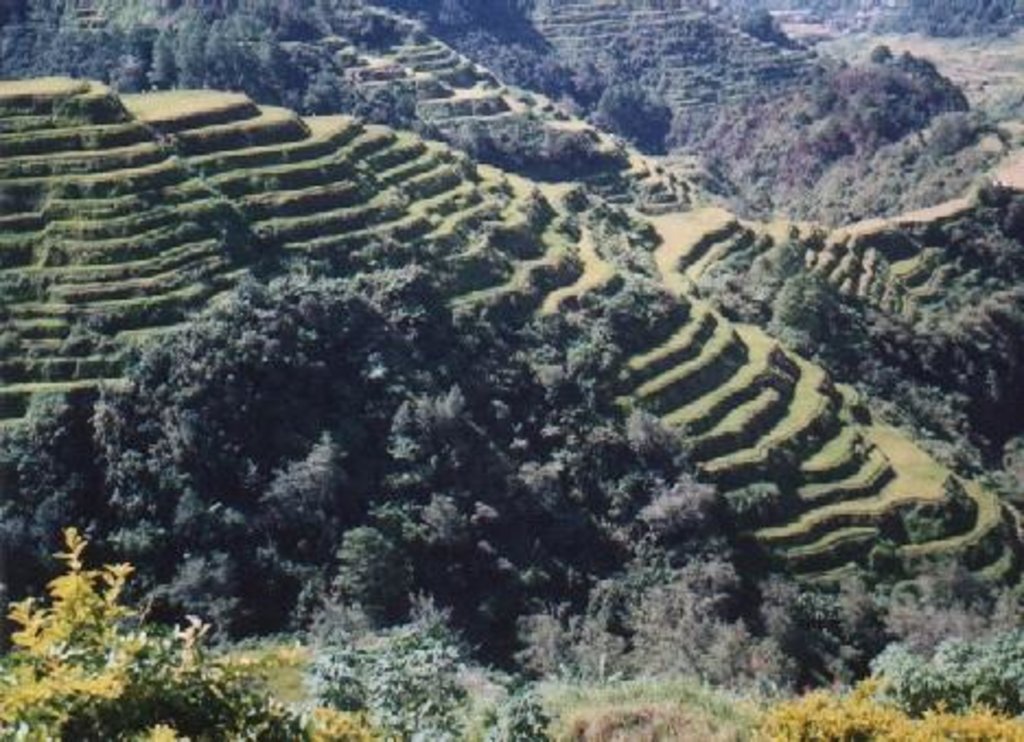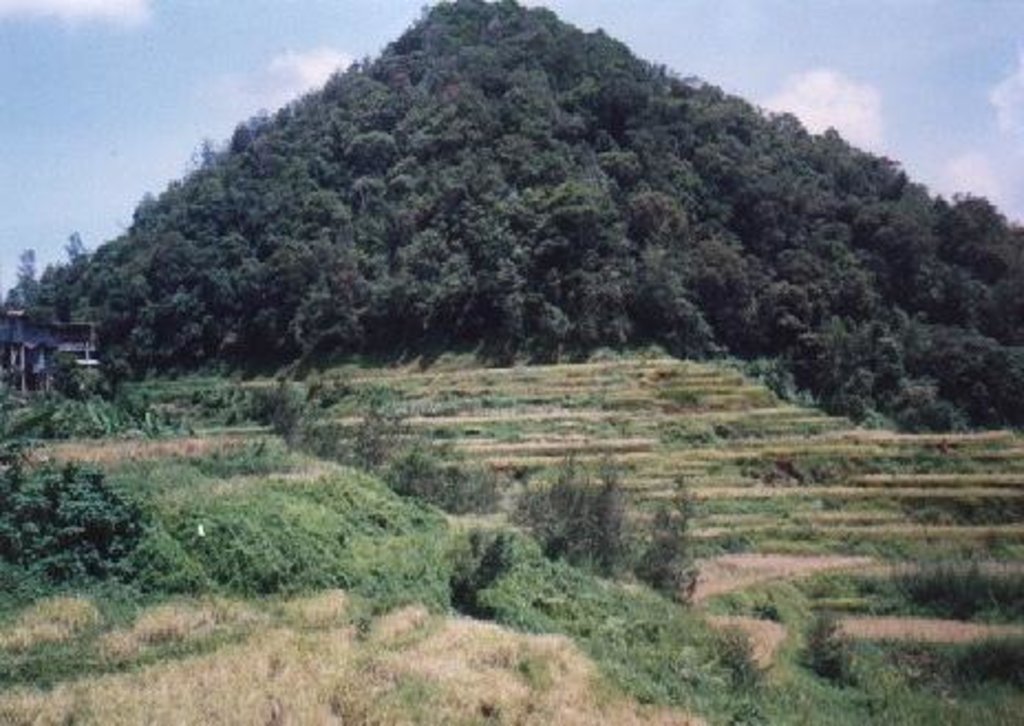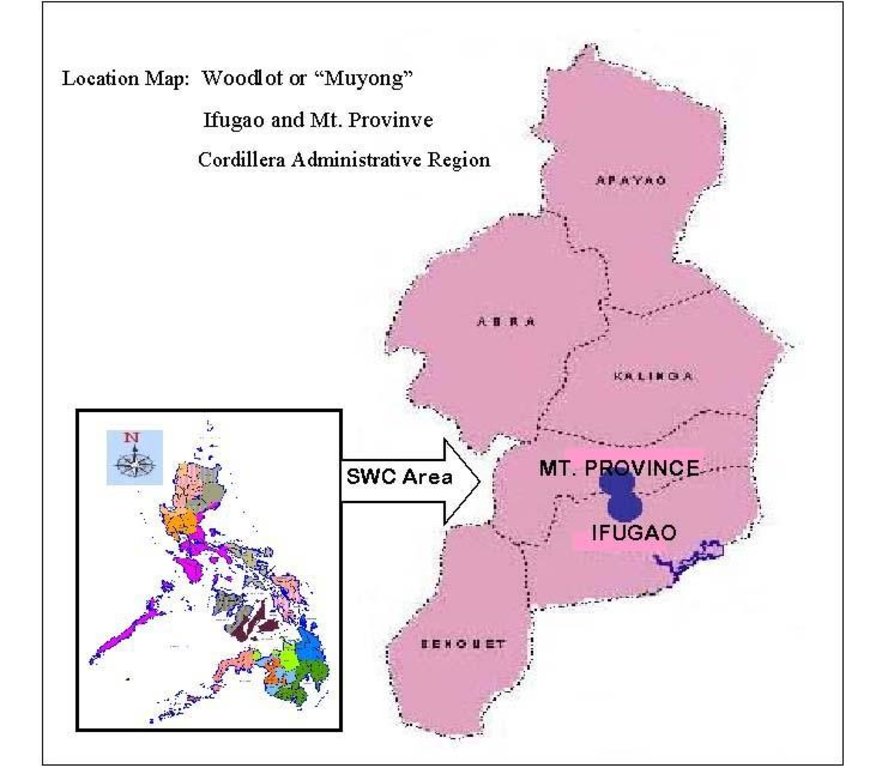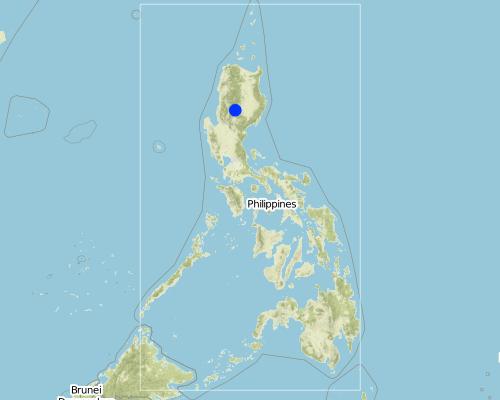Woodlot [Philippines]
- Création :
- Mise à jour :
- Compilateur : Unknown User
- Rédacteur : Deborah Niggli
- Examinateur : Deborah Niggli
Muyong
approaches_1955 - Philippines
Voir les sections
Développer tout Réduire tout1. Informations générales
1.2 Coordonnées des personnes-ressources et des institutions impliquées dans l'évaluation et la documentation de l'Approche
Nom du projet qui a facilité la documentation/ l'évaluation de l'Approche (si pertinent)
Decision Support for Mainstreaming and Scaling out Sustainable Land Management (GEF-FAO / DS-SLM)1.3 Conditions relatives à l'utilisation par WOCAT des données documentées
Quand les données ont-elles été compilées (sur le terrain)?
15/01/2009
Le compilateur et la(les) personne(s) ressource(s) acceptent les conditions relatives à l'utilisation par WOCAT des données documentées:
Oui
2. Description de l'Approche de GDT
2.1 Courte description de l'Approche
Woodlot is a forest management approach which aims the to provide food, wood for fule, construction and material for woodcarving and to provide a steady source of water for the lower-hilly riceland area.
2.2 Description détaillée de l'Approche
Description détaillée de l'Approche:
Woodlot or 'muyong' as it is called in the local language is basically a timber management system. The harvesting of non-timber products like fruits and other benefits like the maintenance of a stable water supply are secondary objectives. Fuelwood and construction timber are the major products of woodlot. The usual size of woodlot is not more than one hectare and is individually owned. The approach is believed to have started at least a century ago. It began when it became apparent that sources of fuelwood near homes were becoming difficult to find. The approach also came about when people realized the need for accountability in the use and management of natural resources. The ancestors of the present-day owner of the woodlots were influenced by the relationship of a reliable and steady water supply and the existence of forest. Woodlots normally evolved from swidden fields. The owners encouraged the growth of prefered species either by direct seeding or by transplanting seedlings uprooted fron nearby forest.
Present practices involve the growing of introduced-fast growing species such as mahogany (Switeria macrophylla) and gmelina (Gmelina arborea). Rattan a valuable material for the furniture industry is also raised in the woodlot. Medicinal herbs are also gathered. Mushrooms and nuts are also grown. Woodlot is an approach unique to the indigenous tribes of the Cordillera. Boundaries, tenures and disputes are settled based on local traditions and beliefs. Common disputes arise from illegal gathering of fruit products. Transfer of ownership is upon the discretion of parents and only to married children. Inheritance of a woodlot denotes the handling down of authority and responsibility over the family. Woodlot or 'muyong'has been hailed as one of the nine successful 'Traditional Forest Related Knowledge' (TFRK). In terms of sophistication and social organization, woodlot is no equal among the approaches being practiced by the different ethnic groups in the country.
2.3 Photos de l'approche
2.5 Pays/ région/ lieux où l'Approche a été appliquée
Pays:
Philippines
Région/ Etat/ Province:
Mountain Province and Ifugao
Map
×2.6 Dates de début et de fin de l'Approche
Si l'année précise est inconnue, indiquez approximativement quand l'Approche a démarré:
il y a plus de 50 ans (technologie traditionnelle)
2.7 Type d'Approche
- traditionnel/ autochtone
2.8 Principaux objectifs de l'Approche
Sustainable use of forest resources by employing traditional beliefs, customs and traditions. Promote ecological balance.
2.9 Conditions favorisant ou entravant la mise en œuvre de la(des) Technologie(s) appliquée(s) sous l'Approche
cadre juridique (régime foncier, droits d'utilisation des terres et de l'eau)
- favorise
Regalian doctrine which says that all public lands are owned by the state. -> Regular maintenance of a portion of the forest by weeding, removing of vines and undesirable species.
connaissances sur la GDT, accès aux supports techniques
- favorise
Lack of knowledge on the proper care and maintenance of forest resources. -> Provisions of traditional skills, customs and beliefs in the care and maintenance.
3. Participation et rôles des parties prenantes impliquées dans l'Approche
3.1 Parties prenantes impliquées dans l'Approche et rôles
- exploitants locaux des terres / communautés locales
Specific ethnic groups: The indigenous tribes in the Cordillera and Caraballo mountain ranges in Northern Luzon.
3.2 Participation des exploitants locaux des terres/ communautés locales aux différentes phases de l'Approche
| Participation des exploitants locaux des terres/ communautés locales | Spécifiez qui était impliqué et décrivez les activités | |
|---|---|---|
| initiation/ motivation | passive | |
| planification | passive | |
| mise en œuvre | passive | |
| suivi/ évaluation | aucun |
3.4 Prises de décision pour la sélection de la Technologie/ des Technologies
Indiquez qui a décidé de la sélection de la Technologie/ des Technologies à mettre en œuvre:
- les exploitants des terres seuls (auto-initiative)
Expliquez:
Land user driven (bottom-up). Indigenous practice. Consultation among clan members and between clan.
Spécifiez sur quelle base ont été prises les décisions:
- expériences et opinions personnelles (non documentées)
4. Soutien technique, renforcement des capacités et gestion des connaissances
4.1 Renforcement des capacités/ formation
Une formation a-t-elle été dispensée aux exploitants des terres/ autres parties prenantes?
Oui
Spécifiez qui a été formé:
- exploitants des terres
Formats de la formation:
- sur le tas
Thèmes abordés:
Informal training among family members on the management of forest for sustainable use.
4.2 Service de conseils
Les exploitants des terres ont-ils accès à un service de conseils?
Oui
Spécifiez si le service de conseils est fourni:
- dans les champs des exploitants?
Décrivez/ commentez:
Environmental protection particularly watershed management is a top priority of the government and NGO's. The 'woodlot' approach of watershed protection is regarded as a perfect example of forest management being employed by indigenous people.
4.3 Renforcement des institutions (développement organisationnel)
Des institutions ont elles été mises en place ou renforcées par le biais de l'Approche?
- oui, modérément
Spécifiez à quel(s) niveau(x), ces institutions ont été renforcées ou mises en place:
- local
Décrivez l'institution, ses rôles et responsabilités, ses membres, etc.
by promoting aesthetics
4.4 Suivi et évaluation
Le suivi et l'évaluation font ils partie de l'Approche? :
Oui
Si oui, ce document est-il destiné à être utilisé pour le suivi et l'évaluation?
Non
4.5 Recherche
La recherche a-t-elle fait partie intégrante de l’Approche?
Oui
Spécifiez les thèmes:
- sociologie
- économie/ marketing
- écologie
- technologie
Donnez plus de détails et indiquez qui a mené ces recherches:
Researches on traditional forest knowledge of different ethnic groups.
5. Financement et soutien matériel externe
5.1 Budget annuel de la composante GDT de l'Approche
Commentez (par ex. principales sources de financement/ principaux bailleurs de fonds):
land users 100%
5.2 Soutiens financiers/ matériels fournis aux exploitants des terres
Les exploitants des terres ont-ils reçu un soutien financier/ matériel pour la mise en œuvre de la Technologie/ des Technologies?
Oui
5.3 Subventions pour des intrants spécifiques (incluant la main d'œuvre)
- équipement
| Spécifiez les intrants subventionnés | Dans quelle mesure | Spécifiez les subventions |
|---|---|---|
| outils | ||
- intrants agricoles
| Spécifiez les intrants subventionnés | Dans quelle mesure | Spécifiez les subventions |
|---|---|---|
| semences | ||
| seedlings | ||
Si la main d'œuvre fournie par les exploitants des terres était un intrant substantiel, elle était:
- volontaire
5.4 Crédits
Des crédits ont-ils été alloués à travers l'Approche pour les activités de GDT?
Non
5.5 Autres incitations ou instruments
D'autres incitations ou instruments ont-ils été utilisés pour promouvoir la mise en œuvre des Technologies de GDT?
Non
6. Analyses d'impact et conclusions
6.1 Impacts de l'Approche
Est-ce que l'Approche a mobilisé/ amélioré l'accès aux ressources financières pour la mise en œuvre de la GDT?
- Non
- Oui, un peu
- Oui, modérément
- Oui, beaucoup
The approach contributed to effective water conservation to sustain the rice terraces
Est-ce que l'Approche a amélioré les questions foncières et des droits d'utilisation qui entravent la mise en œuvre des Technologies?
- Non
- Oui, un peu
- Oui, modérément
- Oui, beaucoup
The land use right (no land titles) is being respected and honored and the approach fits well in the over-all scheme. The land use right is well respected in the communities. Conflicts are peacefully resolve through compromises and agreements.
Did other land users / projects adopt the Approach?
- Non
- Oui, un peu
- Oui, modérément
- Oui, beaucoup
The concept is being adopted in other areas with different degrees of success. It is being talked about as a classic example of resource management.
6.3 Durabilité des activités de l'Approche
Les exploitants des terres peuvent-ils poursuivre ce qui a été mis en œuvre par le biais de l'Approche (sans soutien extérieur)?
- oui
6.4 Points forts/ avantages de l'Approche
| Points forts/ avantages/ possibilités du point de vue de l'exploitant des terres |
|---|
| Strong respect for customs/traditions in the management of resources. |
| Strong backing from local government units (LGU's) |
| Points forts/ avantages/ possibilités du point de vue du compilateur ou d'une autre personne ressource clé |
|---|
| Respect for land users rights even though there is no legal documents to hold on for the land |
| Continous replanting |
| Strong resolve of the land users on the need for sustainability. |
6.5 Faiblesses/ inconvénients de l'Approche et moyens de les surmonter
| Faiblesses/ inconvénients/ risques du point de vue de l’exploitant des terres | Comment peuvent-ils être surmontés? |
|---|---|
| Woodlot can be a sanctuary for pests for the nearby rice fields. | Maintenance and cleanliness. |
| Faiblesses/ inconvénients/ risques du point de vue du compilateur ou d'une autre personne ressource clé | Comment peuvent-ils être surmontés? |
|---|---|
| Not all members of the community is involved/benefited. | Wider involvement using other areas within the vicinity of the community. |
| Tendency for the woodlot to be commercialized and over-exploited. | Carrying capacity of the woodlot should be determined. |
7. Références et liens
7.1 Méthodes/ sources d'information
- visites de terrain, enquêtes sur le terrain
- interviews/entretiens avec les exploitants des terres
7.2 Références des publications disponibles
Titre, auteur, année, ISBN:
Report on the Study of Traditional Forest Related Knowledge of the Ifugao and Bontoc Ethnic Groups in the Cordillera Region of the Philippines
Disponible à partir d'où? Coût?
Department of Environment and Natural Resources, Quezon City
Titre, auteur, année, ISBN:
Environmental and Socio-Economic Impact, Analysis of an Indigenous and Introduced Agroforestry Systems in Luzon.
Disponible à partir d'où? Coût?
University of the Philippines Los Banos Library, Los Banos, Laguna
Liens et modules
Développer tout Réduire toutLiens
Aucun lien
Modules
Aucun module trouvé


